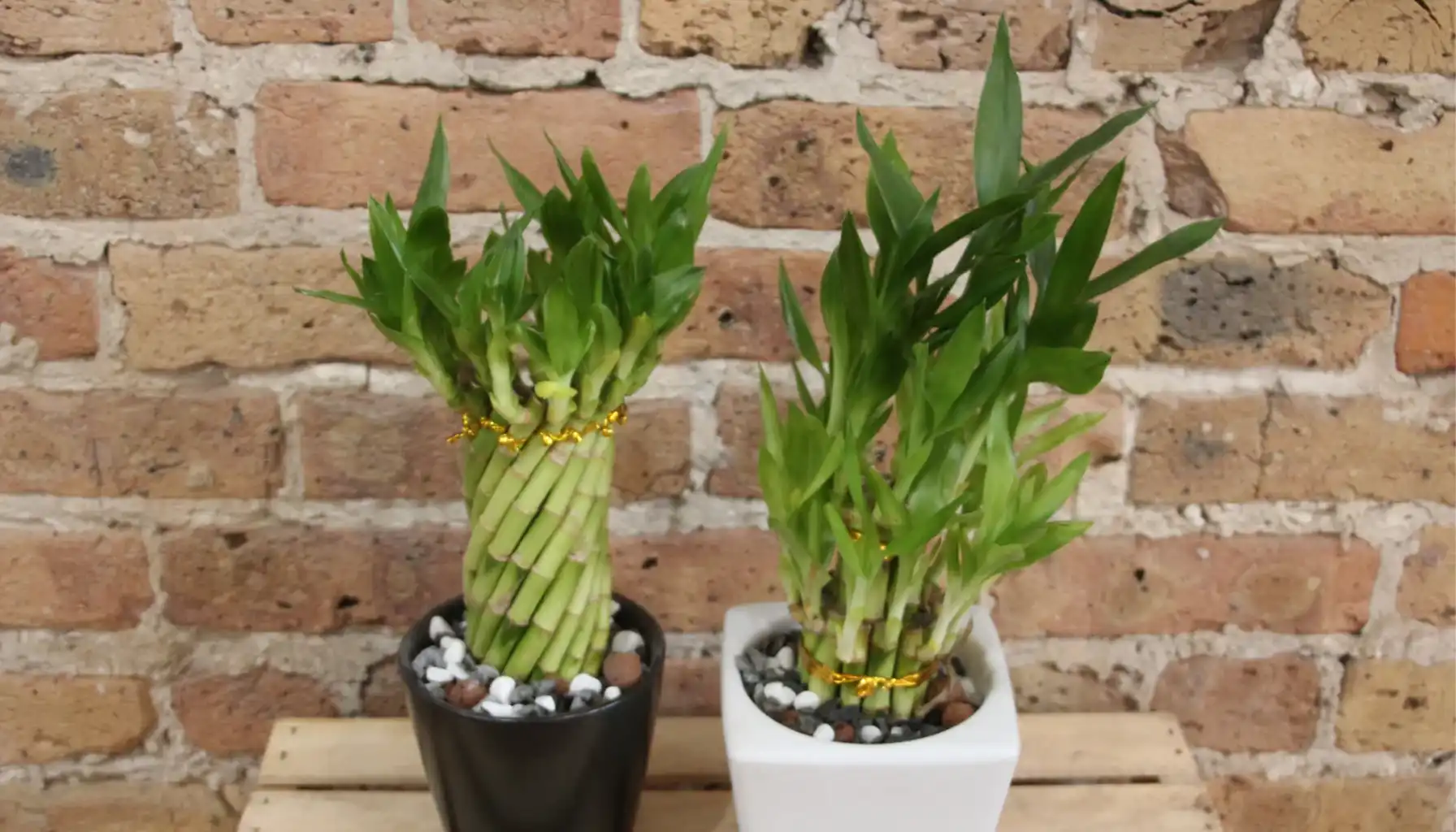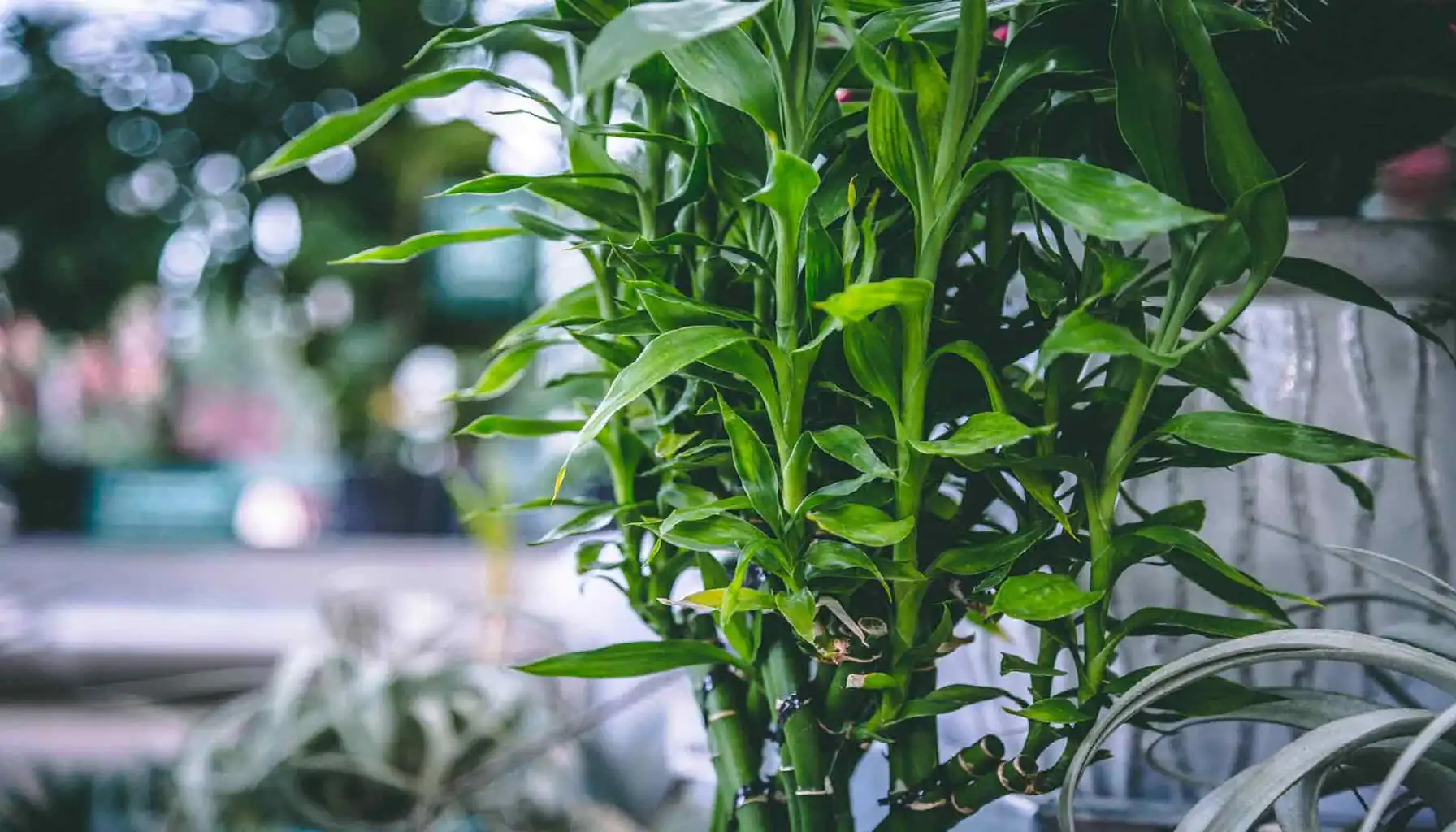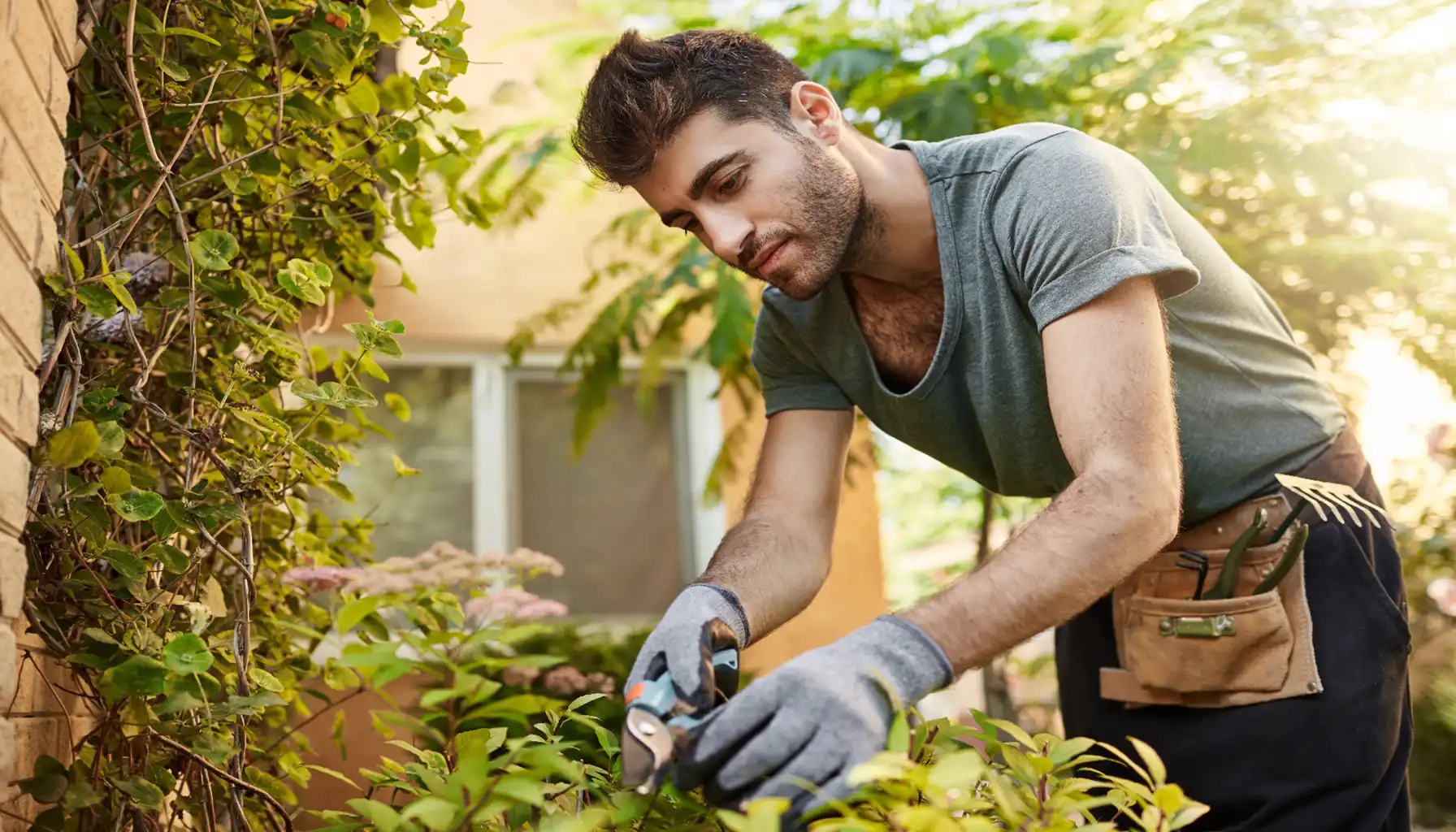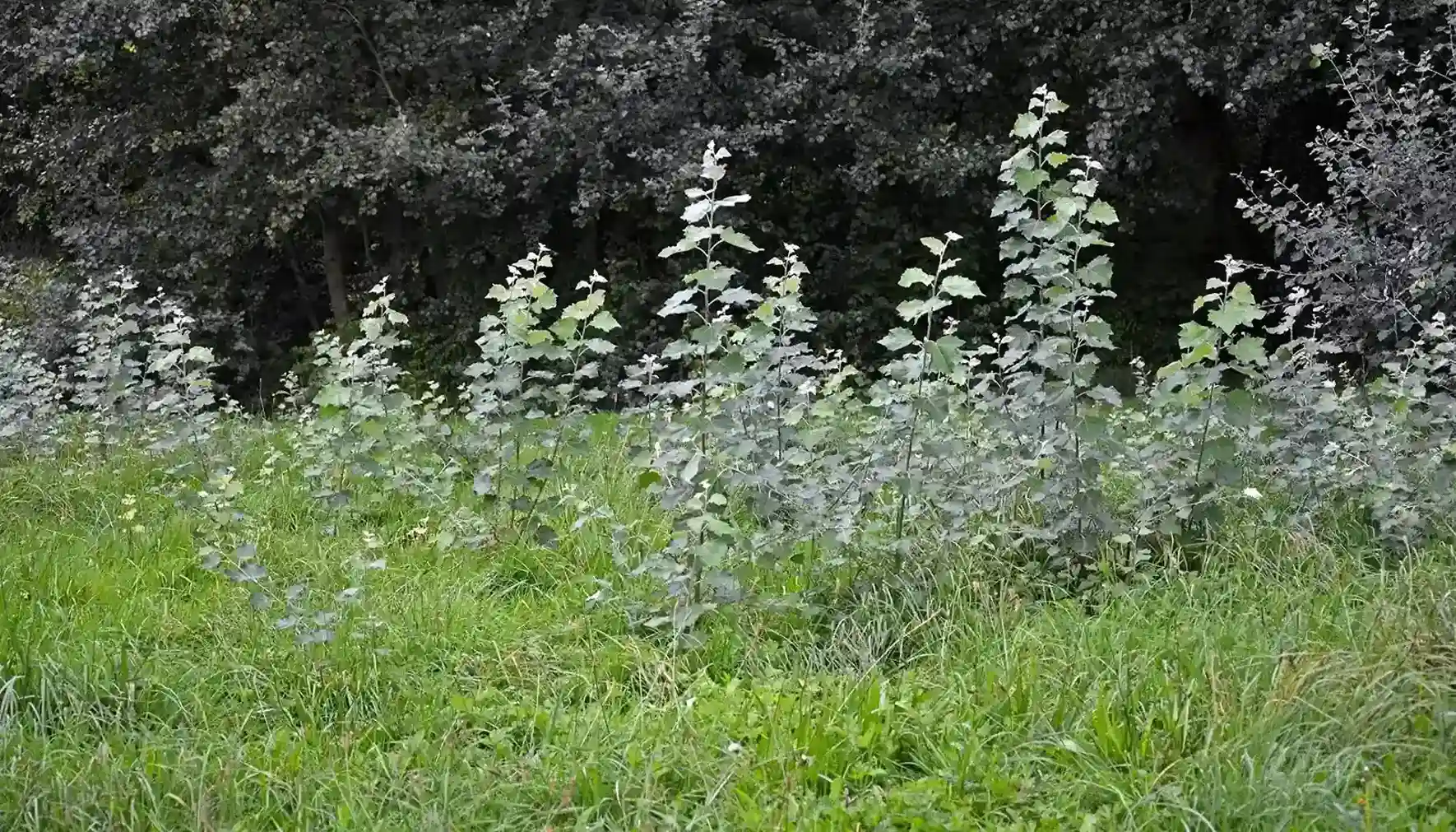Plants, like any other living beings, require the right conditions to survive – and the right attention to thrive, too. The Dracaena Sanderiana Lucky Bamboo plant may sometimes be considered a resilient, hard-to-kill natural creation, but even such foolproof houseplants should never be neglected in terms of their needs.
Whatever happens to sanderiana Dracaena, understanding the cause is the first step toward a healthy, lush garden with the plants full of vigor to thrive. So, what does this tropical monocot look like? What are the most common health issues affecting this species, and how to address them with the use of a simple yet effective plant diagnosis app on the go?
The Overview of the Lucky Bamboo (Dracaena Sanderiana)
Let us start with the basics, since the lucky bamboo Dracaena sanderiana image might be a bit too blurred these days. So, Dracaena sanderiana is a perennial herbaceous plant, originally native to Central Africa, which features smooth, segmented stems and narrow, arching leaves of different colors (depending on the type).
Although it is commonly known as bamboo, it is a bit far from being true. In fact, this species is not related to true bamboo but belongs to the Asparagaceae family and is a monocot, sharing certain biological traits with grasses and lilies as well. Nevertheless, its reputation is faster than the facts can catch up. One of its most appealing qualities is its ability to thrive in different conditions, though this may also lead to severe consequences and mere negligence, which is to be covered further.
The Main Characteristics |
Common Name | Lucky Bamboo |
Botanical Name | Dracaena sanderiana |
Plant Type | Perennial, herbaceous |
Family | Asparagaceae |
Native Region | Central Africa |
Height | Up to 100 cm (39 inches) |
Leaf Length | Up to 23 cm (9 inches) |
Growth Form | Upright stalks, often trained into spirals or braids |
Leaf Color | Gray-green to bright green (variegated varieties available) |
Toxicity | Toxic to cats and dogs (contains saponins) |
Growth Rate | Moderate |
Toxicity Warning: Is Dracaena Sanderiana Toxic to Cats and Dogs?
Safety is the most important aspect of gardening, for those who might be affected by flora should be taken into consideration first of all. Dracaena sanderiana flowers, as well as other parts, contain compounds called saponins, which can cause adverse reactions when ingested. As for the symptoms, these generally include vomiting, drooling, loss of appetite, incoordination, and, in some cases, dilated pupils.
So, is Dracaena sanderiana safe for cats? No, but consumption should not be fatal. HOWEVER, if you suspect your pet or a child has chewed or eaten part of the toxic plant, contact your doctor right away.

How to Care for Dracaena Sanderiana Plant When It Is Sick
Even the hardiest natural creations may get sick, and there are no exceptions to this rule. When one observes beautifully arranged vegetation, it is more frequently about a Dracaena sanderiana in the wild. But when cultivated by a human, it is vital to take responsibility for the garden and never let it suffer from improper care and consequent distress.
Yellowing Leaves
Yellowing leaves are one of the most common signs that your plant is suffering, and this is when the Dracaena sanderiana gold care should be instantly amended. So, why does such a condition occur, and how to cope with it correctly?
Symptoms | Possible Causes | Solutions |
1. Entire leaves or leaf tips turn yellow 2. Leaves become soft or drop prematurely 3. Yellowing starts from the bottom leaves upward | Overwatering: Especially in soil, roots become waterlogged and oxygen-starved Poor water quality: Tap water with chlorine or fluoride can cause leaf discoloration Too much direct sunlight: Scorches leaves and causes yellowing Nutrient deficiency: Particularly if the plant has been in water a long time without fertilization Old age: Natural yellowing of the oldest leaves at the base | 1. Switch to filtered or distilled water to avoid chemical buildup 2. In soil, water only when the top inch is dry; in water, change it every 7 to 10 days 3. Move the plant to indirect light 4. Use diluted liquid fertilizer once a month if in water, or twice a month in soil 5. Trim yellow leaves to prevent further stress and redirect energy to healthy parts |
Browning Leaf Tips or Edges
When a plant exhibits leaf tips or dry, crispy edges, this generally means that there is severe environmental stress, rather than simple aging or sun damage (which are typically confused). We bet you might have stumbled upon relevant lucky bamboo Dracaena sanderiana photos, so it is not an unfamiliar case to identify, though.
Symptoms | Possible Causes | Solutions |
1. Dry, brown edges or tips on otherwise healthy green leaves 2. Leaf margins curling slightly inward 3. In severe cases, tips become brittle and break off | Low humidity: Especially common in dry indoor environments Fluoride or chlorine in tap water: Causes chemical burns Salt/mineral buildup: Over-fertilization or prolonged use of hard water Underwatering: Roots may not be receiving consistent moisture | 1. Switch to distilled or filtered water to eliminate harmful additives 2. Increase humidity levels around the plant 3. Flush soil (if potted) occasionally with clean water to remove salt buildup 4. Trim the affected areas, i.e., the brown tips 5. Use only diluted plant food once a month at most |
Related article: Soil Control: The Importance of pH Adjustment in Agriculture
Mushy, Rotting Stems
Some issues may be covered from the vision, but their manifestations are not as covered as one may think. A mushy or foul-smelling stem is a serious warning sign for a Dracaena sanderiana in soil and water. As such, these plants are typically prone to bacterial rot when conditions become stagnant or unhygienic. If left untreated, the entire plant may collapse.
Symptoms | Possible Causes | Solutions |
1. Soft, squishy, or translucent stalks 2. Brown or black areas on the stem 3. Foul or musty odor from the base 4. Yellowing leaves near the affected area 5. The plant may lean, fall over, or break | Standing water left unchanged for too long: Promotes bacterial growth Dirty containers or tools: Introduce pathogens during water changes or propagation Overwatering in soil: Roots and lower stems become waterlogged and rot Mechanical damage: Cracks or bruises in the stalk may allow rot to enter | 1. Immediately trim off the rotting sections 2. Disinfect the container with hot water and mild soap and/or diluted vinegar 3. Replace water every 7–10 days and ensure it is filtered/distilled 4. Use clean tools for pruning or propagation 5. When in soil, check drainage for the soil to be able to dry slightly between waterings |
Leaves Falling Off or Wilting
Leaves may fall, and it is one of the least desirable things that may happen to a lucky bamboo plant Dracaena sanderiana. However, keep in mind that occasional shedding of older leaves is normal, but the more drop or wilt, the less stable and healthy the plant’s internal system is likely to be.
Symptoms | Possible Causes | Solutions |
1. Drooping, curling, or hanging leaves 2. Sudden or gradual leaf drop 3. Soft, weak, or shriveled leaves to the touch 4. Discoloration may precede wilting (yellow or pale green) | Temperature shock: Sudden cold drafts or heat exposure can stress the plant Inconsistent watering: Both overwatering and underwatering may lead to wilting Poor lighting: Too little light weakens leaf structure and energy production Root issues: Rotting/compacted roots reduce water and nutrient consumption Transplant shock or handling stress: Can cause temporary wilting after repotting or cutting (manageable) | 1. Ensure stable temperatures between 16 to 27 °C (61 to 81 °F) 2. Set a watering schedule* 3. Relocate to a bright spot with indirect light for optimal energy absorption 4. Inspect roots for rot or overcrowding (prune if needed) 5. Minimize plant movement or repotting unless necessary (plants are flexible, but anything needs some rest) |
*So as to set accurate watering schedules and learn how much hydration is needed for your plant to thrive, it might be reasonable to appeal to AI Plant Finder, an innovative app for garden management and real-time plant health diagnostics on the spot.
Detect what is wrong with your precious green inhabitants and explore treatment plans to try. Enjoy gardening with AI Plant Finder and never give up!
Read also: How Often Should You Water Your Plants? A Seasonal Guide
Stunted Growth or Pale Leaves
Should your Dracaena sanderiana Victory seem "frozen", produce smaller leaves, or fade in color, this may mean it is suffering from an imbalance in care. Though this species is a slow grower as it is, extended periods of little to no growth or unusually pale leaves are not ok. So, what does this mean?
Symptoms | Possible Causes | Solutions |
1. Obviously slower or halted growth 2. Smaller new leaves or no new leaves at all 3. Leaves in light green, yellowish, or just dull colors 4. Thin, weak stems compared to the healthy ones | Insufficient light: The plant cannot photosynthesize and, thus, produce oxygen and energy to grow Nutrient deficiency: No explanation needed. Overcrowded roots: Limit nutrient and water uptake Old or stagnant water: Lacks oxygen and nutrient availability Stress from recent propagation or repotting | 1. Move to a brighter location with indirect sunlight 2. Employ a diluted liquid fertilizer once a month 3. Refresh or divide root clusters if the plant is overcrowded 4. Change water regularly to maintain the appropriate concentration of oxygen 5. Give the plant time to adjust to a new environment |
With your attention and proper care comes a healthy garden. Do not neglect the slightest signs and catch problems early – before they become hard to bear.
Related AI Plant Finder Posts




